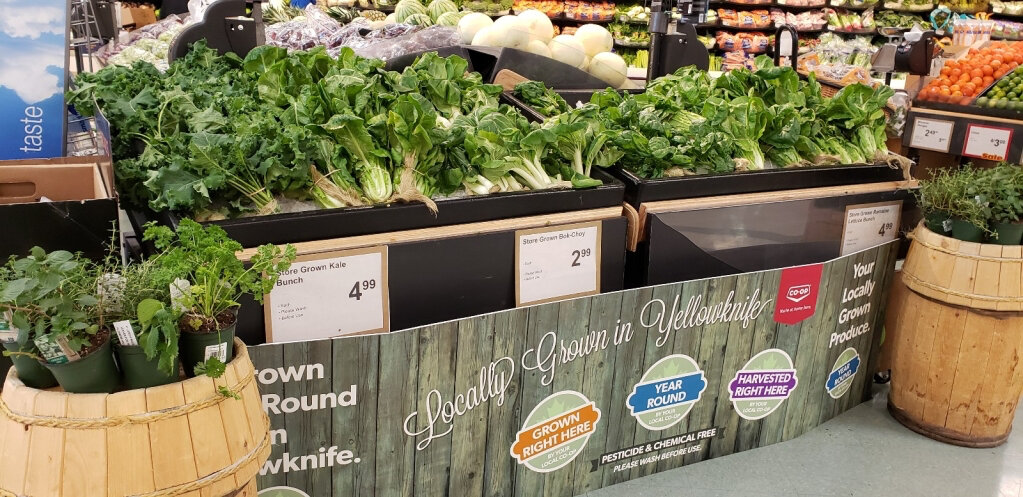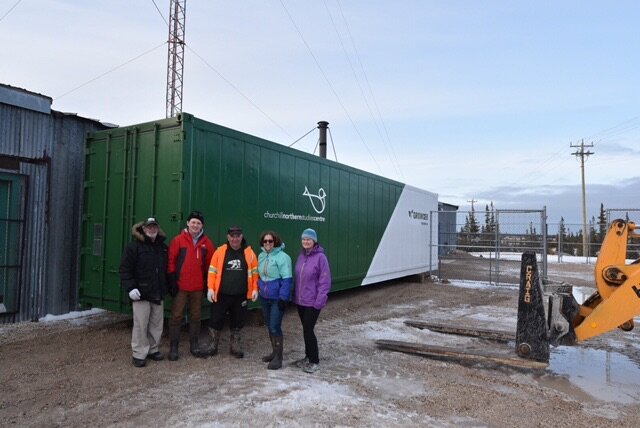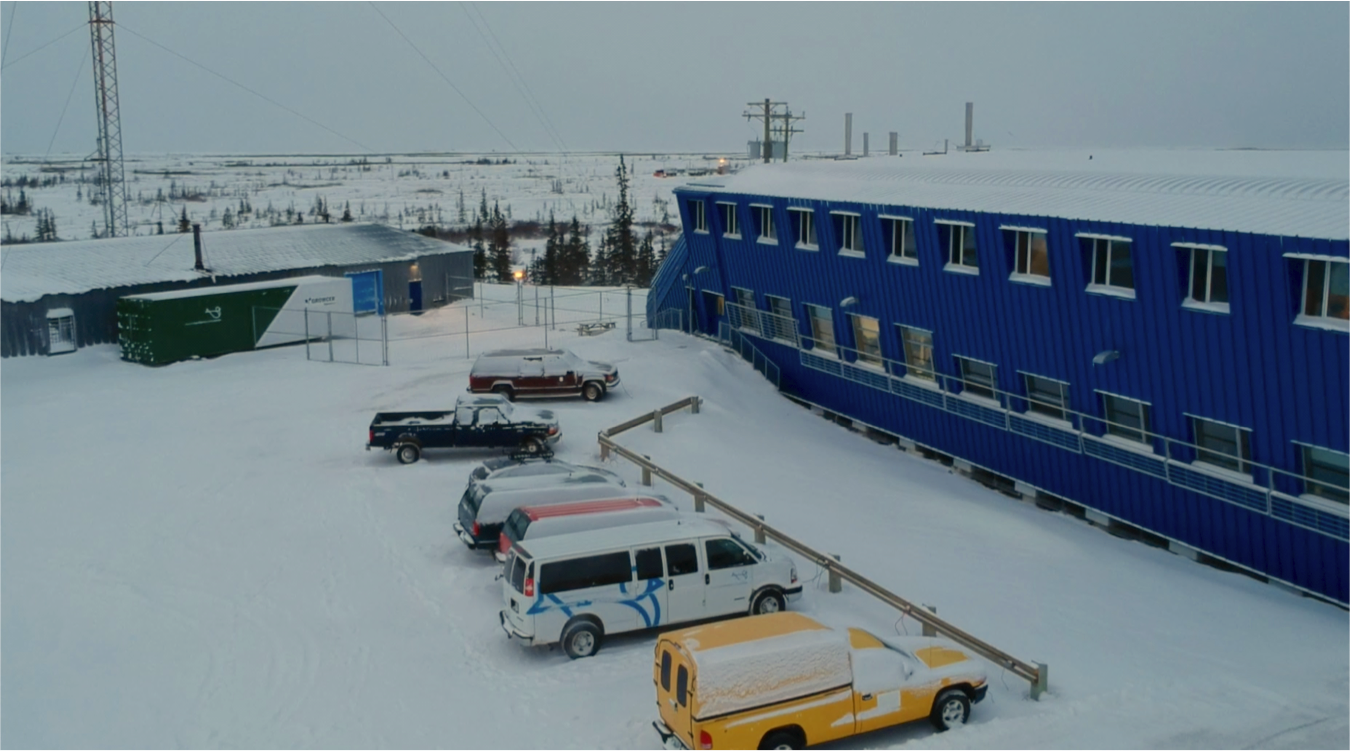Working with Northern Communities
In 2018, Growcer partnered with Makivik Corporation to launch a project in Kuujjuaq, a coastal northern village in the Nunavik region of Quebec.
If you’re familiar with Growcer, you know about our connection to the North. If you’re not, we’ll explain why the North, what some of our current northern projects look like, and more broadly, what it means to work collaboratively with northern communities.
The Start
The idea for Growcer started in Iqaluit in 2015. While running entrepreneurship workshops as part of Enactus uOttawa, co-founders Alida Burke and Corey Ellis witnessed firsthand how the high cost of fresh, healthy food was hurting northerners. After community conversations and multiple return trips, they landed on the idea of a modular hydroponic farm as a possible sustainable solution.
Today, Growcer partners with more than 20 communities across Canada to grow fresh produce locally. The farms go beyond produce, acting as hubs for community engagement, employment, education and local economic development. While we’ve gone on to partner with non-remote communities, schools, non-profits, and grocery stores - the North remains a key part of our story.

Growcer in Kuujjuaq

In 2018, a Growcer project launched in Kuujjuaq, a coastal northern village in the Nunavik region of Quebec. The project launched in partnership with the Makivik Corporation. Makivik means “To Rise Up” in Inuktitut, and is a fitting name for an organization mandated to protect the rights, interests and financial compensation provided by the 1975 James Bay and Northern Quebec Agreement, the first comprehensive Inuit land claim in Canada.
Kuujjuaq’s farm operates out of the local store, Newviq’vi, and a team of six employees co-manage the system. They grow mountain sorrel (qungulit) and lettuce. For the past two years, the team continued to have consistent, successful harvests.
Around 70 per cent of what’s grown is sold through the store, with the rest distributed among community organizations such as elders’ homes and daycares.
Working with the “North”


Growcer partners with northern communities, but each project is different. To group communities under a northern umbrella would simplify and flatten communities beyond recognition. Growcer in Kuujjuaq is different from Growcer in Yellowknife from Growcer in Churchill.
Even within one community, there are a range of perspectives and goals for the future.

“A community is a group of people that’s not homogenous, they have different perspectives, people are less engaged and others are more engaged.”
Nathan Cohen-Fournier previously held the position as head of the economic development department for Makivik Corporation and was involved in launching growing projects in Kuujjuaq and Inukjuak. He shares that when deciding what projects to undertake, there’s rarely a homogenous vision. For some northerners, hydro-electric projects are a priority to reduce the reliance on diesel fuel. For others, building infrastructure such as elders’ homes or hatcheries for Arctic Char are higher priorities. Sometimes projects are selected based on available capacity or funding.
“You try to engage with as many community members as possible. In reality, you don’t necessarily end up mobilizing the whole community, sometimes you just need a core group of people and a few key local organizations that support you,” Cohen-Fournier starts. “I think that it’s a kind of myth that there are communities where everyone is coming together. Just like anywhere, a community is a group of people that’s not homogenous, they have different perspectives, people are less engaged and others are more engaged.”
It is why, for any project, community mobilization plays a key role in its success. For example, the Pirursiivik Project located in Inukjuak opted for a phased approach that introduced greenhouse training, cold frames, indoor gardening, and hydroponic towers over a few years before installing a full Growcer farm.
Building projects with longevity

In Kuujjuaq, a team of six store employees co-manage the system, growing and then selling the produce.
Who will operate the project is just as important as what the project is. Projects that are sustained locally are more likely to continue long term. However, this is easier said than done because finding people to work in the North has been a longstanding issue. In a 2018 report by the Business Development Bank of Canada, 45 per cent of entrepreneurs in British Columbia and the North said they had difficulty hiring new employees.
All of Growcer’s projects are operated locally. In Kuujjuaq, a team of six store employees co-manage the system, growing and then selling the produce.
For Cohen-Fournier, it was important to have local people from Nunavik be operators of the container farm.
“If you’re just another infrastructure that’s managed by people from the south with a high level of turnover, it’s not really a great sign of success for the long term. So in that sense, we put a lot of emphasis on training, mobilization [and] engagement with the community,” he says.
Expanding, not replacing choices
“If you’re just another infrastructure that’s managed by people from the south with a high level of turnover, it’s not a great sign of success for the long term.”
In addition to community mobilization, building knowledge also plays a key role. Produce isn’t traditionally part of the Inuit diet, so showing how it can be cooked and incorporated in dishes helps build knowledge about its uses.
Newer projects, such as greenhouses or container farms, are not mutually exclusive with people’s diets. Produce becomes part of a food mosaic - a complement to existing diets, not a substitution.
“It’s all about autonomy and food sovereignty and being more linked with what you eat, which is really strong up north,” Cohen-Fournier says.
What success looks like
Once projects are up and running, there’s still no guarantee of a 100% success rate. Cohen-Fournier shares how most people were proud to buy local products that were fresh and taste good, but there were others who still didn't know that the local store grew its own produce. Like any community, you will have your enthusiastic supporters for the community garden and others who appreciate it from afar.
“We want [these projects up north] to be successful and ideally cover their costs, and be functional, but at the end of the day, it’s also trying something... you’re experimenting and learning,” he adds.
When working with Northern communities, focus on engagement with the community first and remain open, shedding any preconceived ideas about ‘the North.’ A community-first approach will allow solutions to be built by the North, for the North.
At Growcer, we know we’re only one tool in the toolbox to solve a problem. This also means we recognize we are not a fit for everyone. Our goal is to make local food more accessible to all, and there are many roads that will get us there. A partner who is sincerely committed long term will always prioritize the relationship first when things don’t go according to plan.
For anyone looking to start a community food project, Cohen-Fournier shares his advice for others. “My biggest advice is just to try things out. I think there’s a big need for experimentation, being creative, and seeing how you can bring people to the table in fun ways.”
Summary
A few of the takeaways discussed when working with the North:
Get to know the community first. Northern communities may share commonalities but they are not the same.
Set up projects for long term success with community mobilization, training, and knowledge building.
Hire local talent. Projects that are sustained locally are more likely to continue long term.
Let go of the expectation that every project will be a 100% success and focus on experimenting, innovating and learning to improve.

Your Guide To Growcer
Download Everything You Need To Know - your comprehensive guide to Growcer farms and what it takes to transform your idea into a reality. Understand what you can grow, potential yields, and installation requirements.
hbspt.forms.create({region: "na1",portalId: "3059315",formId: "bed7d966-445e-4b2a-8525-18b000b3093f"});

